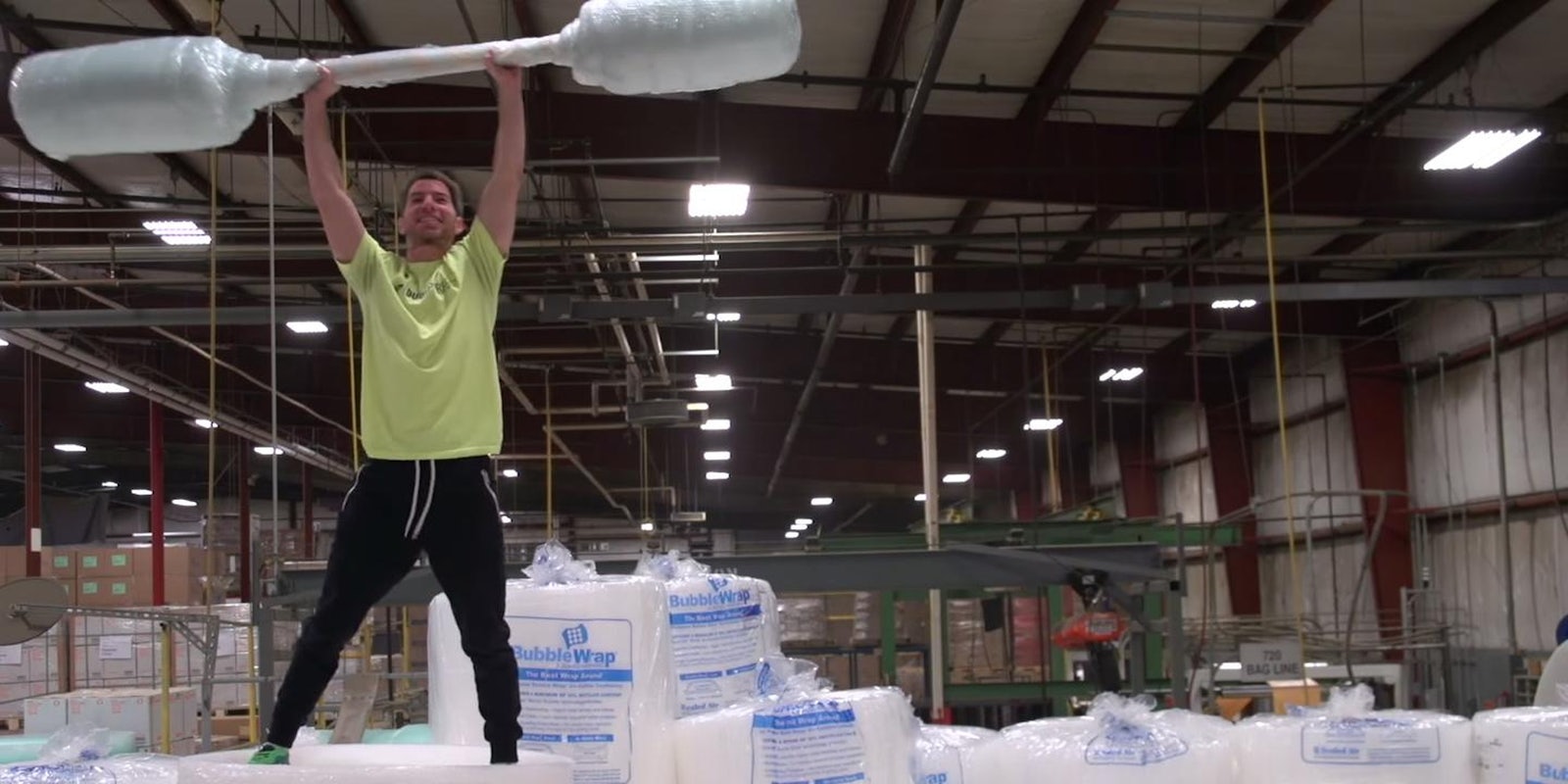BY BREE BROUWER
Back in October 2014, YouTube CEO Susan Wojcicki explained how she didn’t want to let the online video site’s business concerns replace YouTube’s unique offerings for creators. But now, the site has clarified a policy that restricts some types of branded videos. According to Digiday, YouTube has revised its paid product placements documentation, which prohibits graphical title cards from appearing on creators’ videos.
The policy states that creators working with brands to make sponsored content are not allowed to put video overlays of those brands’ logos or other marketing materials on the videos in question. However, if brands agree to pay Google to advertise on that particular creator’s channel, then video overlays are allowed. For example, this recent “Bubble Wrap Battle” video from Dude Perfect cannot show Bubble Wrap’s logo unless the packaging company paid for a “full Google media buyout.”
Additionally, Paul Kontonis, Executive Director of the Global Online Video Association, reports YouTube is implementing a new ad unit dubbed a “product card.” This ad format is a six-second pre-roll spot will allows brands to insert a quick sponsorship or endorsement message before the main video begins. YouTube did not comment on Digiday’s request for more information on the proposed “product cards.”
This new ad unit and YouTube’s updated paid product policy serve as ways for YouTube to clarify what content creators can and cannot do when working with brands. While the restriction on brand messages is not new, those messages still occasionally ended up in videos, such as in the Dude Perfect example above.
Still, brands that wish to add graphical title cards to videos must give a cut of revenue to Google, and that point has made some execs wary. “YouTube needs to do it, because in their minds they are losing money to product integration and sponsorships within video,” said Kontonis. “But this industry is still in the first inning, so to be putting all these constructs into place that take more revenue away from the networks that are helping build the quality of the content, audience, and monetization opportunities is shortsighted.”
A YouTube representative said the revised paid product policy is just a clarification of terms implemented in late 2014. Technically, creators can still add “text-only title cards where there is Paid Product Placement for the purpose of paid product disclosure only.” It’s always been a good practice for creators to put disclaimers on their sponsored videos, though YouTube’s policy restricts those disclaimers to text.
Jan Dawson, founder and chief analyst at Jackdaw Research, calls YouTube’s paid product policy revision “especially poor timing on YouTube’s part” considering the recent introduction of fellow online video competitor Vessel. “That [platform] is specifically targeted toward content creators earning more revenue,” he said. “If YouTube is cracking down on ways of monetizing on YouTube itself, that will just drive people into the arms of Vessel and some of those newer video platforms.”
Screengrab via Dude Perfect/YouTube


